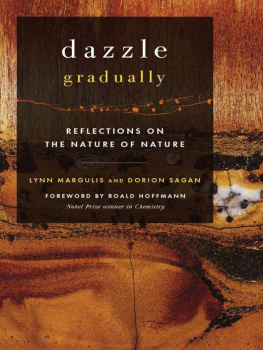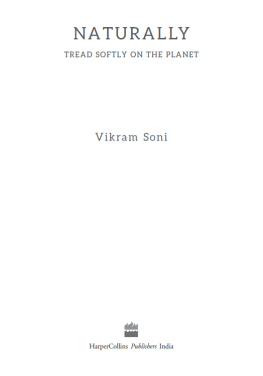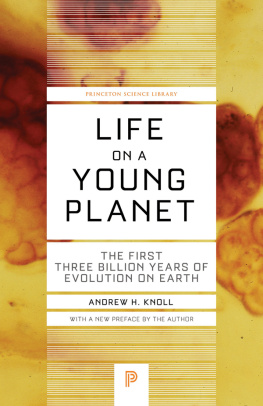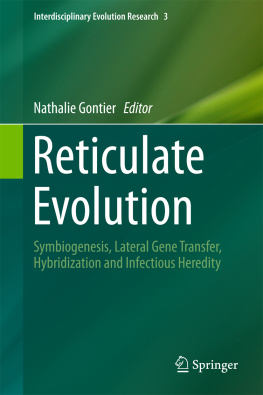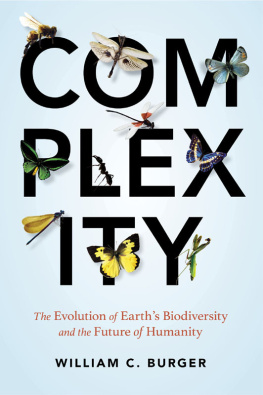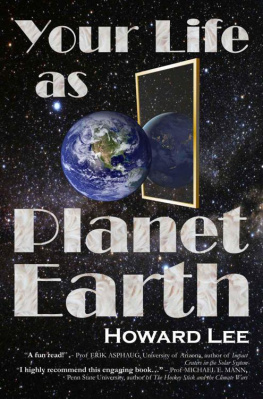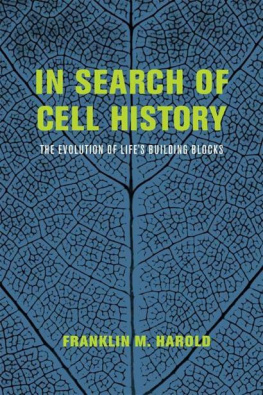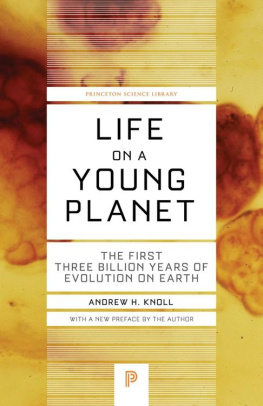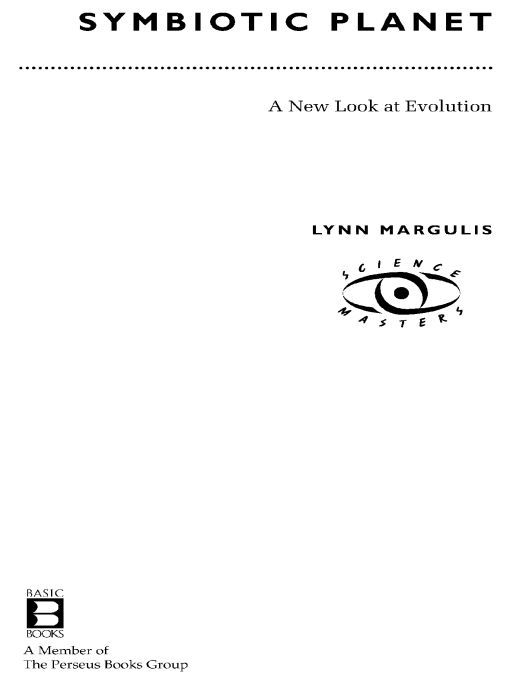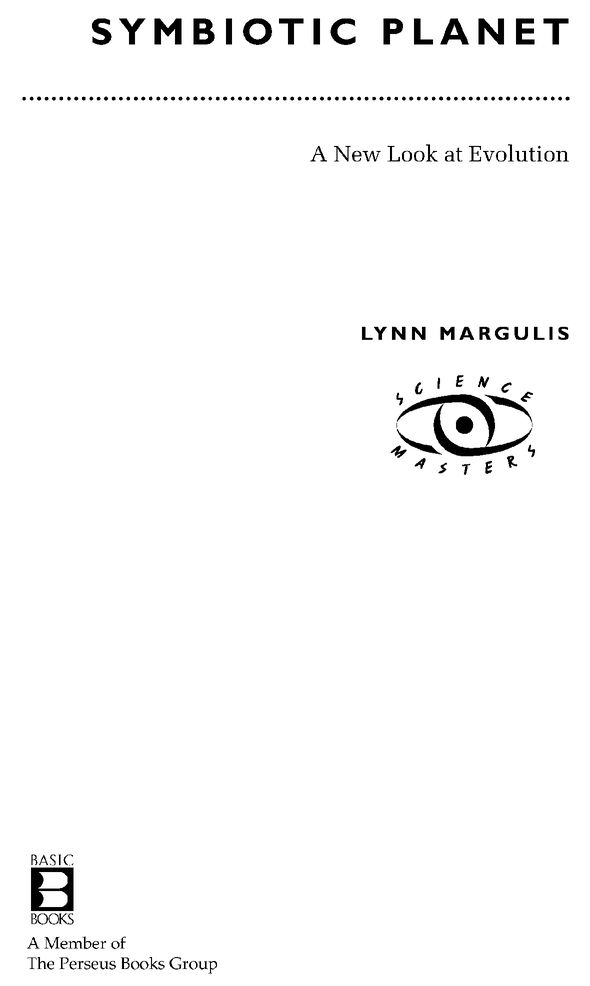Table of Contents
Table of Figures
By the Same Author
What Is Sex? Lynn Margulis and Dorion Sagan
Slanted Truths: Essays on Gaia, Symbiosis and Evolution Lynn Margulis and Dorion Sagan
Five Kingdoms: An Illustrated Guide to the Phyla of Life on Earth, Third Edition Lynn Margulis and Karlene V. Schwartz
What Is Life? Lynn Margulis and Dorion Sagan
Garden of Microbial Delights: A Practical Guide to the Subvisible World Dorion Sagan and Lynn Margulis
Symbiosis in Cell Evolution: Microbial Communities in the Archean and Proterozoic Eons, Second Edition
The Illustrated Five Kingdoms: A Guide to the Diversity of Life on Earth Lynn Margulis, Karlene V. Schwartz and Michael Dolan
Diversity of Life: The Illustrated Guide to the Five Kingdoms Lynn Margulis, Karlene V. Schwartz and Michael Dolan
Concepts of Symbiogenesis: A Historical and Critical Study of the Research of Russian Botanists Edited by Mark McMenamin and Lynn Margulis
Environmental Evolution: Effects of the Origin and Evolution of Life on Planet Earth Edited by Lynn Margulis and Lorraine Olendzenski
Origins of Sex: Three Billion Years of Genetic Evolution Lynn Margulis and Dorion Sagan
Symbiosis as a Source of Evolutionary Innovation: Speciation and Morphogenesis Edited by Lynn Margulis and Rene Fester
Mystery Dance: On the Evolution of Human Sexuality Lynn Margulis and Dorion Sagan
Microcosmos: Four Billion Years of Evolution from Our Microbial Ancestors Lynn Margulis and Dorion Sagan
Illustrated Glossary of Protoctista: Vocabulary of the Algae, Apicomplexa, Ciliates, Foraminifera, Microspora, Water Molds, Slime Molds, and the Other Protoctists Edited by Lynn Margulis, Heather I. McKhann and Lorraine Olendzenski
PROLOGUE
Time does go on
I tell it gay to those who suffer now
They shall survive
There is a sun
They dont believe it now - (1121)
Emily Dickinson
Mom, what does the Gaia idea have to do with your symbiotic theory? asked my son Zach after he came home from work one day. No longer an aspiring politician, now a disillusioned seventeen-year-old aide to a legislator at the State House in Boston, he had just returned home from an exhausting attempt to draft old-peoples-home legislation for one of his two absentee bosses.
Nothing, I immediately responded, or at least nothing as far as Im aware. I have been pondering his question ever since. The book you hold in your hands attempts to provide the answer. The two major scientific ideas that I have worked on all my professional life, serial endosymbiosis theory (SET) and Gaia, and the relation of one to the other, form its central theme.
Zachs question, how symbiosis jibes with Gaia, was neatly answered by a wisecrack of a wonderful former student of mine named Greg Hinkle, now a professor at the University of Massachusetts, at South Dartmouth. Before receiving his Ph.D., Greg knew and taught that symbiosis is simply the living together in physical contact of organisms of different species. Partners in symbiosis, fellow symbionls abide in the same place at the same time, literally touching each other or even inside each other. The concept Gaia, an old Greek name for Mother Earth, postulates the idea that the Earth is alive. The Gaia hypothesis, proposed by the English chemist James E. Lovelock, is that aspects of the atmospheric gases and surface rocks and water are regulated by the growth, death, metabolism, and other activities of living organisms. Greg quips, Gaia is just symbiosis as seen from space: all organisms are touching because all are bathed in the same air and the same flowing water. The reasons I think Greg is correct are detailed in the pages that follow.
If this book teaches you about symbiosis and Gaia theory in the context of radically new views of life, it is only because of four lucky facts: first, Zachs question; second, the contribution of Dorion Sagan to the quality of my thinking and writing; last, the appropriate insistence of William Fruchl, of Basic Books, on more focused organization and less self-indulgent narrative. The pleasure of working with such an intellectually curious and properly critical editor continues.
This book is about planetary life, planetary evolution, and the ways our views of them are changing. If there is a sub-text, it concerns exploration, specifically scientific exploration, and the many quirks and agenda that can nurture or block it. Many circumstances conspire to extinguish scientific discoveries, especially those that cause discomfort about our cultures sacred norms. As a species, we cling to the familiar, comforting conformities of the mainstream. However, convention penetrates more deeply than we tend to admit. Even if we lack a proper name for and knowledge of the history of any specific philosophy or thought style, all of us are embedded in our own safe reality. Our outlooks shape what we see and how we know. Any idea we conceive as fact or truth is integrated into an entire style of thought, of which we are usually unaware. Call the cultural constraints trained incapacities, thought collectives, social constructions of reality. Call the dominating inhibitions that determine our point of view whatever you wish. They affect all of us, including scientists. All are saddled with heavy linguistic, national, regional, and generational impediments to perception. Like those of everyone else, the scientists hidden assumptions affect his or her behavior, unwittingly directing thought.
One widely held unstated assumption is the great chain of being. It defines the venerable position of humans as the exact center of the universe in the middle of the chain of being below God and above rock. This anthropocentric idea dominates religious thought, even that of those who claim to reject religion and to replace it with a scientific worldview. For the Greeks, the chain joined a panoply of gods at the top to, in descending order, men, women, slaves, animals, and vegetables. A substratum of rocks and minerals occupied the lowest link. The Judeo-Christian version allowed slight modification: people, above animals, were positioned a little lower than the angels. Man, of course, was indisputably and obviously superseded by the Almighty.
These ideas are rejected as obsolete nonsense by a consistent scientific worldview. All beings alive today are equally evolved. All have survived over three thousand million years of evolution from common bacterial ancestors. There are no higher beings, no lower animals, no angels, and no gods. The devil, like Santa Claus, is a useful myth. Even the higher primates, the monkeys and apes, in spite of their name (primate comes from Latin, primus, first) are not higher. We Homo sapiens sapiens and our primate relations are not special, just recent: we are newcomers on the evolutionary stage. Human similarities to other life-forms are far more striking than the differences. Our deep connections, over vast geological periods, should inspire awe, not repulsion.
As a species, we still fear the eccentric in our views of ourselves. Despite or perhaps because of Darwin, as a culture we still dont really understand the science of evolution. When science and culture conflict, culture always wins. Evolutionary science deserves to be much better understood. Yes, humans have indeed evolved, but not just from apes or even from other mammals. We evolved from a long line of progenitors, ultimately from the first bacteria.



